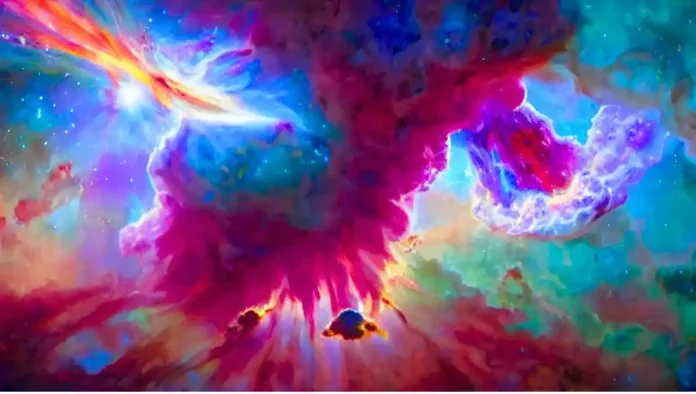Our galaxy is known as the Milky Way and it is a barred spiral galaxy. It is estimated to be about 100,000 light-years in diameter and contains between 100 and 400 billion stars, including our own sun. The Milky Way is also home to a number of other celestial bodies, including planets, asteroids, and comets. The Milky Way is shaped like a flattened disk with a central bulge, surrounded by a spherical halo of older stars and globular clusters. The disk of the Milky Way is composed of gas, dust, and stars that are organized into spiral arms. These spiral arms are regions where new stars are formed and are visible in the night sky as bands of light and dark patches.
The centre of the Milky Way
The centre of the Milky Way is located in the direction of the constellation Sagittarius, which is visible in the southern hemisphere. At the centre of the Milky Way lies a supermassive black hole, which has a mass of about 4 million times that of the sun.
The Milky Way is also part of a group of galaxies known as the Local Group, which includes about 54 other galaxies, including the Andromeda Galaxy and the Triangulum Galaxy. The Local Group is part of an even larger structure known as the Virgo Supercluster, which contains over 100 galaxy groups and clusters.
The Milky Way is a barred spiral galaxy that contains between 100 and 400 billion stars, including our own sun. It is home to a number of other celestial bodies, including planets, asteroids, and comets. The centre of the Milky Way contains a supermassive black hole and it is part of the Local Group, which is part of the even larger Virgo Supercluster.
The Milky Way is a vast and complex system, and astronomers are still working to understand all of its intricacies. In addition to the features mentioned earlier, here are some other key aspects of the Milky Way:
Dark Matter
About 85% of the matter in the Milky Way is thought to be dark matter, which is invisible and does not emit or absorb light. Dark matter is detected through its gravitational effects on visible matter, such as stars and gas.
Halo
The halo of the Milky Way is a spherical region that surrounds the central bulge and disk. It contains mainly older stars, globular clusters, and dark matter. The halo also contains a stream of stars known as the Sagittarius Stream, which is thought to have originated from a smaller galaxy that was absorbed by the Milky Way.
Galactic Centre
The centre of the Galaxy is a busy and energetic region. In addition to the supermassive black hole, there are also many massive stars, gas clouds, and other objects in this area. The centre of the Milky Way emits intense radiation in the form of radio waves, X-rays, and gamma rays.
Spiral Arms
The spiral arms of the Galaxy are regions where stars are forming. They contain gas and dust that is compressed by shock waves, leading to the formation of new stars. The arms are not fixed structures, but rather they rotate around the galaxy at different speeds. The Sun is located in one of the spiral arms, known as the Orion Arm or Local Arm.
Galactic Rotation
The Milky Way rotates around its centre, with different parts of the galaxy moving at different speeds. The rotation curve of the Milky Way is relatively flat, indicating that there is more mass in the galaxy than can be accounted for by visible matter. This is another piece of evidence for the presence of dark matter.
Galactic Evolution
The Galaxy has evolved over billions of years. It started out as a cloud of gas and dust that collapsed under its own gravity to form a disk with a central bulge. Since then, the Milky Way has undergone many changes, including the formation of new stars, the merging of smaller galaxies, and the growth of the supermassive black hole at its centre.
